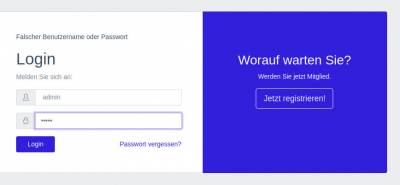User Tools
Sidebar
Installation
Fr. 26.03.2021
Zur Installation der Webseite auf einem USB-Stick gehe ich wie folgt vor:
Ich folge der Installationsanleitung aus dem Readme: https://gitlab.com/BorisFlit/bewaesserung-ip
Als erstes installiere ich Ubuntu 20.04 LTS: https://releases.ubuntu.com/20.04/
11:31
Ich downloade das Desktop image for 64-bit PC (AMD64) computers ( standard download) und speichere es auf meinem Rechner
I download and execute Rufus https://rufus.ie/
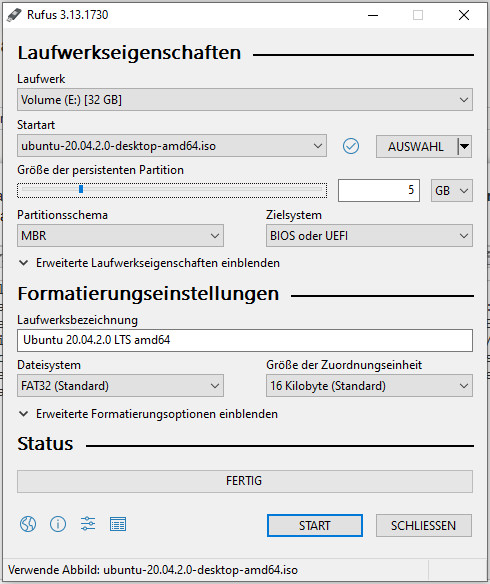
Ich stimme zu
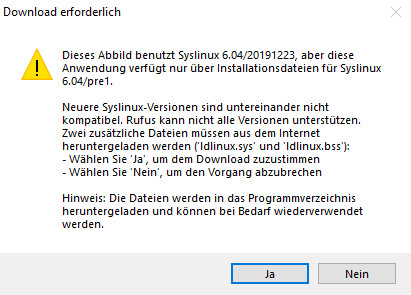
11:45
Ich reboote einen der PCs im fablab mit dem USB-stick
12:00
Beim Start drücke is F12 und wähle UEFI-Boot –> Ubuntu
Unable to find a medium container a live file system
Attempt interactive reboot from a URL?
no
“USB-Device” wäre die richtige Option gewesen (statt UEFI)…Ubuntu bootet jetzt
12:09
doch nicht…bekomme wieder den selben Fehler:
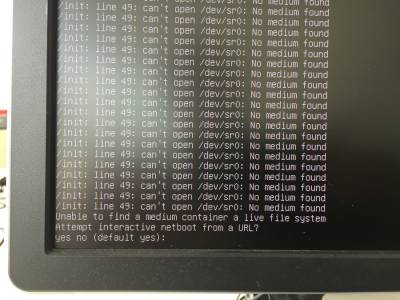
Habe mehrere verschiedene USB-ports probiert, immer dasselbe
13:04
Habe das ganze nochmal auf einem anderen USB-stick gemacht…jetzt funktioniert es.
Mußte das deutsche Keyboard layout installieren um mich bei gitlab anmelden zu können (@ funktioniert schwierig auf EN/DE)
$ sudo apt update $ sudo apt install python3 python3 is already the newest version (3.8.2-0ubuntu2). $ python3 -V Python 3.8.5 $ sudo apt install python3-venv E: Package 'python3-venv' has no installation candidate $ sudo apt-get upgrade (dauert ne Weile 15:55-16:24) update-initramfs is disabled since running on read-only media E: Package 'python3-venv' has no installation candidate
Googeling for possible solutions:
https://stackoverflow.com/questions/62314556/how-to-install-virtualenv-on-ubuntu-20-04-gcp-instance
https://community.home-assistant.io/t/package-it-missed-in-installation-in-python-virtual-environment/48788
…
habe einiges versucht:
sudo apt install python3-venv 10 sudo apt install python3.8-venv 11 sudo apt install python3.4-venv 12 apt cache search venv 13 apt-cache search venv 14 sudo apt install python3-venv 15 sudo apt install python3.9-venv 16 sudo apt install python3.8-venv 17 sudo apt install python3.7-venv 18 sudo apt install python3.6-venv 19 sudo apt install python3.5-venv 20 sudo apt install python3.10-venv 21 sudo apt-get install python3-venv 23 sudo apt-get update 24 sudo apt-get install python3-venv 25 sudo apt-get install python-virtualenv 26 sudo apt-get install python3-virtualenv 27 sudo apt-get install python3.8-venv 30 sudo apt-get update 31 sudo apt-get upgrade 32 sudo apt-get install python3-virtualenv 33 sudo apt-get install python3-venv 34 sudo apt-get install python3 35 sudo apt-get install python3-pip 36 sudo apt-get update 37 sudo apt-get upgrade 38 sudo apt-get install python3-venv
immer noch nichts…
Mo. 29.03.2021
Habe Ubuntu auf dem Rechner PC Fablab 4 installiert.
Python version ist: Python 3.8.5
jetzt funktioniert
sudo apt install python3-venv \\
ohne Fehlermeldung.
sudo apt install python3-pip\\ sudo apt-get install git-all git version --> git version 2.25.1 cd Documents/ mkdir FME cd FME mkdir IP15_Bewaesserung cd IP15_Bewaesserung git clone https://gitlab.com/BorisFlit/bewaesserung-ip.git
Bei der Passworabfrage gebe ich meine G-mail Adresse und mein gitlab Passwort ein.
cd bewaesserung-ip source bin/activate --> (django-vue) fablab@fablab-OptiPlex-7010:~/Documents/FME/IP15_Bewaesserung/bewaesserung-ip$ WARNING: The script sqlformat is installed in '/home/fablab/.local/bin' which is not on PATH. Consider adding this directory to PATH or, if you prefer to suppress this warning, use --no-warn-script-location. WARNING: The script django-admin is installed in '/home/fablab/.local/bin' which is not on PATH. Consider adding this directory to PATH or, if you prefer to suppress this warning, use --no-warn-script-location. WARNING: The scripts isort and isort-identify-imports are installed in '/home/fablab/.local/bin' which is not on PATH. Consider adding this directory to PATH or, if you prefer to suppress this warning, use --no-warn-script-location. WARNING: The script netatmo is installed in '/home/fablab/.local/bin' which is not on PATH. Consider adding this directory to PATH or, if you prefer to suppress this warning, use --no-warn-script-location. WARNING: The scripts epylint, pylint, pyreverse and symilar are installed in '/home/fablab/.local/bin' which is not on PATH. Consider adding this directory to PATH or, if you prefer to suppress this warning, use --no-warn-script-location.
ansonsten alles OK.
python3 manage.py migrate Username (leave blank to use 'fablab'): Email address: meier.ferdinand@gmail.com Password: "fabadmin password" Password (again): Superuser created successfully. cd frontend/ npm install Command 'npm' not found, but can be installed with: sudo apt install npm added 2012 packages from 1471 contributors and audited 2017 packages in 51.965s 98 packages are looking for funding run `npm fund` for details found 1 low severity vulnerability run `npm audit fix` to fix them, or `npm audit` for details npm run serve
cable cross sections DONE Compiled successfully in 9375ms App running at: Local: http://localhost:8080/ Network: http://192.168.1.70:8080/
installed gimp and inkscape
open a new window:
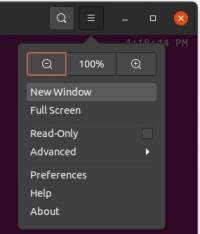
Activate the virtual environment:
source bin/activate
starte django webserver:
python3 manage.py runserver localhost:8000
jetzt kann die Seite localhost:8000 im Browser geöffnet werden:

Installiere Visual Studio Code:
sudo snap install --classic code
Habe in netatmofetch.py den usernamen und passwort eingetragen. Beim ausführen von /graphspage/netatmo_db_import/netatmo_first_import.sh bekomme ich die folgende Meldung:
./netatmo_first_import.sh
Timestamp Datei erzeugt und auf 0 gesetzt.
error invalid_grant https://api.netatmo.com/oauth2/token
None
Traceback (most recent call last):
File "csv_to_database.py", line 72, in <module>
with open(csv_file_path, 'r', encoding='UTF-8') as file:
FileNotFoundError: [Errno 2] No such file or directory: 'netatmo_station.csv'
Habe jetzt den richtigen login für netatmo von Prof.Nebe und habe ihn in netatmofetch.py eingetragen.
Wenn ich jetzt netatmo_first_import.sh ausführe:
./netatmo_first_import.sh
bekomme ich folgende Meldung:
Timestamp Datei erzeugt und auf 0 gesetzt.
[]
Traceback (most recent call last):
File "csv_to_database.py", line 72, in <module>
with open(csv_file_path, 'r', encoding='UTF-8') as file:
FileNotFoundError: [Errno 2] No such file or directory: 'netatmo_station.csv'
Ich habe die Datei netatmo_station.csv mit
touch netatmo_station.csv
erzeugt.
Jetzt bekomme ich
Timestamp Datei erzeugt und auf 0 gesetzt. [] Einträge werden in die Datenbank übertragen... 0 Einträge Übertragen
Bin noch einmal zurück in IP15_Bewaesserung/bewaesserung-ip um das virtual environment zu starten:
~/Documents/FME/IP15_Bewaesserung/bewaesserung-ip$ source bin/activate (django-vue) fablab@fablab-OptiPlex-7010:~/Documents/FME/IP15_Bewaesserung/bewaesserung-ip$ cd graphspage/netatmo_db_import/ (django-vue) fablab@fablab-OptiPlex-7010:~/Documents/FME/IP15_Bewaesserung/bewaesserung-ip/graphspage/netatmo_db_import$ python3 csv_to_database.py -h usage: csv_to_database.py [-h] [-i] [-gt] [-w] optional arguments: -h, --help show this help message and exit -i, --init Bei Erstbenutzung bitte als erstes ausführen (oder wenn der Timestamp auf 0 gesetzt werden soll -gt, --get-timestamp Holt den neusten Timestamp -w, --write Writes the CSV data to the table
Habe den cronjob gestartet:
python3 manage.py crontab add
no crontab for fablab
adding cronjob: (73bb14f920c56753f62140cb4e1eee0b) -> ('*/15 * * * *', 'djangovue.cron.myjob')
sensordata.py ausgeführt
python3 sensordata.py Trying to connect to: eu.thethings.network:8883 Connected with result code: 0 Subscribed to topic: +/devices/+/up
Mi. 31.03.2021
Der chronjob scheint zu laufen:
Schreibe Daten in die Datenbank...
Daten erfolgreich in die Datenbank Geschrieben!
TOPIC: hsrw_iotlab_lse01/devices/lse01_n007/up
PAYLOAD: {'app_id': 'hsrw_iotlab_lse01', 'dev_id': 'lse01_n007', 'hardware_serial': 'A84041B2A18264AC', 'port': 2, 'counter': 9495, 'payload_raw': 'DR0AAAQjBussiAE=', 'payload_fields': {'battery_voltage': {'comment': 'LSE01 battery voltage', 'unit': 'V', 'value': 3.357}, 'extra_temperature_sensor': {'comment': 'Temperature from an extra DS18B20. Not connected by default.', 'unit': '°C', 'value': '0.00'}, 'soil_sensor': {'electrical_conductivity': {'comment': 'Soil electrical conductivity (EC)', 'unit': 'uS/cm', 'value': 11400}, 'moisture': {'comment': 'Volumetric soil water content', 'unit': '%vol', 'value': '10.59'}, 'temperature': {'comment': 'Soil temperature', 'unit': '°C', 'value': '17.71'}}, 'type': 'LSE01'}, 'metadata': {'time': '2021-03-31T11:27:09.90232232Z', 'frequency': 867.1, 'modulation': 'LORA', 'data_rate': 'SF7BW125', 'airtime': 61696000, 'coding_rate': '4/5', 'gateways': [{'gtw_id': 'eui-b827ebfffeeb09b2', 'timestamp': 2172751227, 'time': '2021-03-31T11:27:09.881996Z', 'channel': 3, 'rssi': -39, 'snr': 10.2, 'rf_chain': 0}]}}
Unter http://localhost:8080/ ist jetzt auch der login screen sichtbar.
Leider habe ich das Passwort nicht.
Habe mit
python3 manage.py createsuperuser

